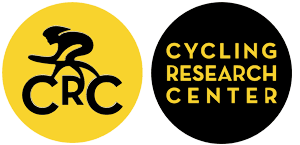Modeling vs. Measuring: How Accurate Is the Calculated Maximal Lactate Steady State?
Keywords:
maximal lactate steady state, maximal rate of lactate accumulationAbstract
Downloads
References
Hauser, T., Adam, J., & Schulz, H. (2014). Comparison of calculated and experimental power in maximal lactate-steady state during cycling. Theoretical Biology and Medical Modelling. doi: 10.1186/1742-4682-11-25
Heck, H., Mader, A., Hess, G., Mücke, S., Müller, R., & Hollmann, W. (1985). Justification of the 4-mmol/l lactate threshold. International Journal of Sports Medicine. doi: 10.1055/s-2008-1025824
Mader, A. (1994). Energiestoffwechselregulation, Erweiterungen des theoretischen Konzepts und seiner Begründungen - Nachweis der praktischen Nützlichkeit der Simulation des Energiestoffwechsels. Computersimulation. Möglichkeiten Zur Theoriebildung Und Ergebnisinterpretation. Brennpunkte Der Sportwissenschaft., 8(16).
Mader, A., & Heck, H. (1986). A theory of the metabolic origin of “anaerobic threshold.” International Journal of Sports Medicine. doi: 10.1055/s-2008-1025802
Nolte, S., Quittmann, O. J., & Meden, V. (2022). Simulation of Steady-State Energy Metabolism in Cycling and Running. SportRχiv.
Weber, S. (2003). Calculation of performance-determining parameters of metabolic activity at the cellular level by means of cycle ergometry [Berechnung leistungsbestimmender Parameter der metabolischen Aktivität auf zellulärer Ebene mittels fahrradergometrischer Untersuchungen]. Deutsche Sporthochschule.
Published
How to Cite
Issue
Section
Copyright (c) 2025 Journal of Science and Cycling

This work is licensed under a Creative Commons Attribution-NonCommercial-NoDerivatives 4.0 International License.
Authors contributing to Journal of Science and Cycling agree to publish their articles under a Creative Commons CC BY-NC-ND license, allowing third parties to copy and redistribute the material in any medium or format, and to remix, transform, and build upon the material, for any purpose, even commercially, under the condition that appropriate credit is given, that a link to the license is provided, and that you indicate if changes were made. You may do so in any reasonable manner, but not in any way that suggests the licensor endorses you or your use.
Authors retain copyright of their work, with first publication rights granted to Cycling Research Center.






